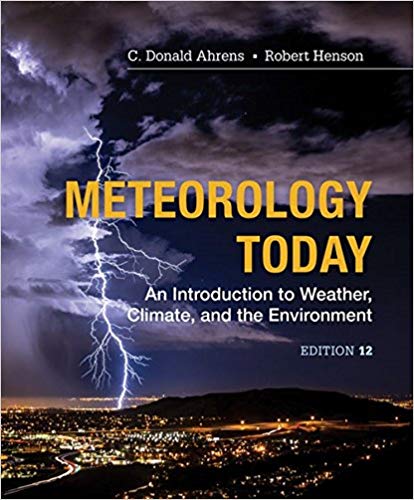The world is an ever-changing picture of naturally occurring events. From drought and famine to devastating floods, some of the greatest challenges we face come in the form of natural disasters created by weather. Yet dealing with weather and climate is an inevitable part of our lives. Sometimes it is as small as deciding what to wear for the day or how to plan a vacation.
But it can also have life-shattering consequences, especially for those who are victims of a hurricane or a tornado. Weather has always been front-page news, but in recent years, extreme weather seems to receive an ever-increasing amount of coverage. From the destruction wrought by extreme storms to the quiet, but no less devastating, impacts of severe drought, weather has enormous impact on our lives.
The longer-term challenges of an evolving climate also demand our attention, whether it be rising sea levels, record global temperatures, intensified downpours, or the retreat of Arctic sea ice. Thanks in part to the rise of social media, more people than ever are sharing their weather-related observations, impressions, and photographs with the world at large. For these and many other reasons, interest in meteorology (the study of the atmosphere) continues to grow.
One of the reasons that meteorology is such an engaging science to study is that the atmosphere is a universally accessible laboratory for everyone. Although the atmosphere will always provide challenges for us, as research and technology advance, our ability to understand and predict our atmosphere improves as well.
We hope this book serves to assist you as you develop your own personal understanding and appreciation of our planet’s dynamic, spectacular atmosphere.
About This Book Meteorology Today is written for college-level students taking an introductory course on the atmospheric environment. As was the case in previous editions, no special prerequisites are necessary. The main purpose of the text is to convey meteorological concepts in a visual and practical manner, while simultaneously providing students with a comprehensive background in basic meteorology. This twelfth edition includes up-to-date information on important topics, including climate change, ozone depletion, air quality, and El Niño.
Also included are discussions of high-profile weather events, such as droughts, heat waves, tornado outbreaks, and hurricanes of recent years. Written expressly for the student, this book emphasizes the understanding and application of meteorological principles. The text encourages watching the weather so that it becomes “alive,” allowing readers to immediately apply textbook material to the world around them. To assist with this endeavor, a color Cloud Chart appears at the end of this text. The Cloud Chart can be separated from the book and used as a learning tool in any place one chooses to observe the sky. Numerous full-color illustrations and photographs illustrate key features of the atmosphere, stimulate interest, and show how exciting the study of weather can be. After an introductory chapter on the composition, origin, and structure of the atmosphere, the book covers energy, temperature, moisture, precipitation, and winds. Next come chapters that deal with air masses and middle-latitude cyclones, followed by weather prediction and severe storms, including a separate chapter devoted to tornadoes.
Wrapping up the book are chapters on hurricanes, global climate, climate change, air pollution, and atmospheric optics. This book is structured to provide maximum flexibility to instructors of atmospheric science courses, with chapters generally designed so they can be covered in any desired order.
For example, the chapter on atmospheric optics, Chapter 20, is selfcontained and can be covered before or after any chapter. Instructors, then, are able to tailor this text to their particular needs. Each chapter contains at least two Focus sections, which expand on material in the main text or explore a subject closely related to what is being discussed. Focus sections fall into one of five distinct categories: Observations, Special Topics, Environmental Issues, Advanced Topics, and Social and Economic Impacts. Some include material that is not always found in introductory meteorology textbooks, such as temperature extremes, cloud seeding, and the weather on other planets. Others help to bridge theory and practice. Focus sections new to this edition include: “GOES-16: New Windows on the Atmosphere,” (Chapter 5), “Rivers in the Atmosphere” (Chapter 11), “The Weird World of Tornado Damage” (Chapter 15), and “A Forecast Challenge: The Devastating Hurricanes of 2017” (Chapter 16). Quantitative discussions of important equations, such as the geostrophic wind equation and the hydrostatic equation, are found in Focus sections on advanced topics. Set apart as “Weather Watch” features in each chapter is weather information that may not be commonly known, yet pertains to the topic under discussion. Designed to bring the reader into the text, most of these weather highlights relate to some interesting weather fact or astonishing event. Each chapter incorporates other effective learning aids:
A major topic outline begins each chapter. interesting introductory pieces draw the reader aturally into the main text..
Important terms are boldfaced, with their definitions appearing in the glossary or in the text.
if interested in learning more about this topic ,please try to visit the link of this book on amazon as following :



















